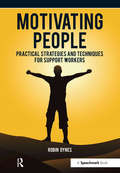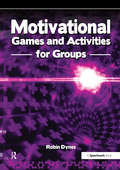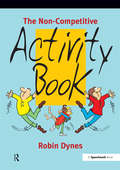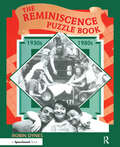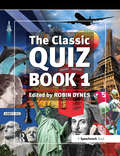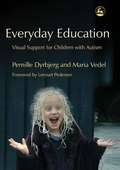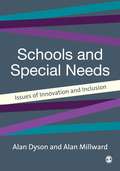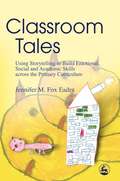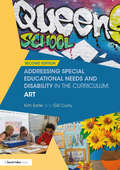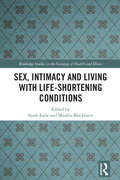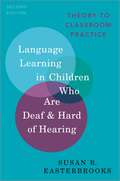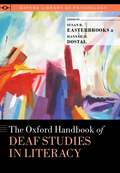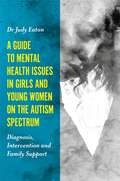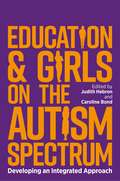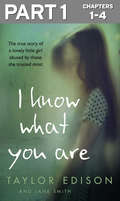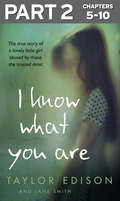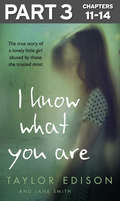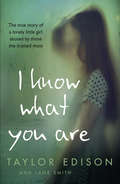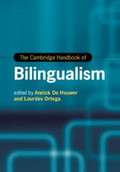- Table View
- List View
Motivating People: Practical Strategies and Techniques for Support Workers
by Robin DynesIn all types of support services and care situations one of the biggest challenges is motivating people to change their behaviour. It particularly applies to individuals who are difficult to motivate because they might lack insight, wilfully ignore or refuse to face their situation, are affected by depression or health problems or are victims of unfortunate circumstances or fear of failure. The task may be to motivate someone to improve their quality of life by participating in a group in a residential home, change a lifestyle because of health reasons, address offending behaviour, learn a new skill to obtain a job or complete an anxiety management programme. The strategies and techniques will help: arouse their interest in making changes; encourage the consideration of change; support their planning for change; mentor the person through planned actions; ensure momentum is maintained; guide the person in making positive use of any relapses; and make sure the change is successfully achieved. This is an invaluable resource for support workers, social workers, health workers, youth workers, probation officers, employment services, tutors and carers. The techniques can be applied when working with individuals or groups in all types of settings including residential homes, day centres, probation, education or youth work.
Motivational Games and Activities for Groups: Exercises to Energise, Enthuse and Inspire
by Robin DynesHow can you encourage people to be motivated? How can you create that sense of yearning to achieve or reach a goal? How can you energise and inspire group members? The exercises and activities in this resource will help you to motivate your team or the group with which you are working. The activities are organised in sections from which you can choose to meet particular group needs. These include: Ice breakers and warm ups; Trust building; Building self-esteem; Inspiring creativity; Aligning values; Creating an inspiring environment; Becoming solution focused; Perception; Resilience; Team building; Visualising and setting goals; Energy boosters; Overcoming anxiety and fear; Managing stress; Stopping procrastination; and; Using competition. Whether your group is small or large you will find something for any setting. Many of the activities can also be used on a one-to-one basis in supervision, with clients or students. The activities are interactive and fun. Trainers, youth leaders, counsellors, group leaders, team managers, teachers, care workers and probation officers will find the resource one in which they constantly dip for inspiration. Robin Dynes is the Social Inclusion Officer for Skills & Learning in his local authority. His main role has been to develop an innovative outreach curriculum that is accessible and meets the needs of people with disabilities, older people and others who are vulnerable. The aim is to ensure that people with disabilities have equal opportunity and an active and fulfilling role within the community.
The Non-Competitive Activity Book
by Robin DynesThis superb practical handbook contains 100 activities that are non-competitive and can be used across the whole age spectrum with individuals or groups. It provides indispensable material for use with learning disabilities, mental health, physical disabilities and regressed psychiatric or geriatric patients. The non-competitive nature of these activities ensures that people feel safe in making a contribution, and fear of failure or disappointment is effectively eliminated. Divided into photocopiable sections, these provide a session format that focuses on maintaining and increasing the function of the whole person. It is an ideal resource for day centres, hospitals, care homes and the creative group leader.
The Reminiscence Puzzle Book: 1930s-1980s
by Robin DynesSpanning the years 1930 to 1989, this is a highly practical and enjoyable puzzle book. It covers events, people, entertainment and everyday life and is designed to encourage group participation to recall and discuss their own personal experiences. It is fully adaptable according to the needs and abilities of the individuals within the group.
The Reminiscence Puzzle Book: 1930s-1980s
by Robin DynesSpanning the years 1930 to 1989, this is a highly practical and enjoyable puzzle book. It covers events, people, entertainment and everyday life and is designed to encourage group participation to recall and discuss their own personal experiences. It is fully adaptable according to the needs and abilities of the individuals within the group.
Winslow Quiz Book: A Speechmark Social Activity Manual for Groups Book 1
by Robin DynesThis completely revised edition of Winslow's bestselling Quiz Book contains more than 2,000 questions categorised into 40 stimulating subjects. It is aimed at adolescents and adults alike and features questions that are all realistically within the scope of the average person. Designed for those who use quizzes as a group activity, the questions are grouped into three ability levels with a layout that enables the organiser to rapidly locate the required topic. Its topics cover areas such as cookery, animals, sport, home, spellings, history and general knowledge.
Everyday Education: Visual Support for Children with Autism
by Pernille Dyrbjerg Maria VedelVisual support aids can be highly effective tools for increasing levels of communication and independence in children with autism, who often have difficulty interpreting spoken language and non-verbal facial expressions. Fully illustrated with inspiring examples, Everyday Education provides a wealth of ideas for creating visual support aids for children on the autism spectrum. Photographs and clear, practical explanations describe how these tools can be arranged helpfully around the home for the child to use. The authors describe how visual support aids can be used in all kinds of everyday situations, from labelling - for example, sticking a picture of a dinner plate with a knife and fork to the chair in which the child sits at meal times - to putting together a pictorial activities schedule for the child to refer to. This fun and encouraging book will be a valuable source of ideas for parents of children with autism and professionals working with them.
Schools and Special Needs: Issues of Innovation and Inclusion (PDF)
by Alan Dyson Dr Alan MillwardShortlisted for the Standing Conference on Studies in Education (SCSE) book awards for 2001 In Schools and Special Needs, the authors provide a critical perspective on the dominant `inclusion' model of special needs education, in terms of implementation in schools and effectiveness of pupil learning outcomes. They take issue with the major advocates of the inclusion model and argue that a different way of understanding special educational needs in mainstream schools is both possible and necessary. The authors, who are eminent in the special needs field, use up-to-date material to develop a new model for special- education in schools.
Classroom Tales: Using Storytelling to Build Emotional, Social and Academic Skills across the Primary Curriculum
by Jennifer EadesStories and storytelling help children to develop emotional literacy, make sense of their world and appreciate different points of view. Fox Eades shows how storytelling is a crucial element of children's education that can enrich the school curriculum and encourage social and thinking skills. The author discusses the different kinds of story that are useful in the classroom context, including traditional stories, fairy tales and sacred stories, and explores the impact of individual and group dynamics on the telling and reception of these stories. She also considers recognised therapeutic uses of storytelling. She provides a series of sample stories and gives practical tips on adapting these to suit different situations and meet different needs. She also advises on a range of techniques such as using props, allowing `reflection' time and prompting interaction. Sections on collective stories and the child as storyteller explain how children can be inspired to compose their own tales that offer opportunities to practise self-expression and negotiation. This practical and engaging book provides all the tools and techniques needed to use storytelling effectively, and will be an essential resource for primary school teachers and others working with children in educational contexts, social workers and parents.
Classroom Tales: Using Storytelling to Build Emotional, Social and Academic Skills across the Primary Curriculum (PDF)
by Jennifer EadesStories and storytelling help children to develop emotional literacy, make sense of their world and appreciate different points of view. Fox Eades shows how storytelling is a crucial element of children's education that can enrich the school curriculum and encourage social and thinking skills. The author discusses the different kinds of story that are useful in the classroom context, including traditional stories, fairy tales and sacred stories, and explores the impact of individual and group dynamics on the telling and reception of these stories. She also considers recognised therapeutic uses of storytelling. She provides a series of sample stories and gives practical tips on adapting these to suit different situations and meet different needs. She also advises on a range of techniques such as using props, allowing `reflection' time and prompting interaction. Sections on collective stories and the child as storyteller explain how children can be inspired to compose their own tales that offer opportunities to practise self-expression and negotiation. This practical and engaging book provides all the tools and techniques needed to use storytelling effectively, and will be an essential resource for primary school teachers and others working with children in educational contexts, social workers and parents.
Addressing Special Educational Needs and Disability in the Curriculum: Art (Addressing SEND in the Curriculum)
by Kim Earle Gill CurryThe SEND Code of Practice (2015) reinforced the requirement that all teachers must meet the needs of all learners. This topical book provides practical, tried and tested strategies and resources that will support teachers in making art lessons accessible and interesting for all pupils, including those with special needs. The authors draw on a wealth of experience to share their understanding of special educational needs and disabilities and show how the art teacher can reduce or remove any barriers to learning. Offering strategies that are specific to the context of art teaching, this book will enable teachers to: develop students’ understanding, appreciation and enjoyment of art and design; advance students’ sense of enquiry about visual and tactile experiences; help pupils to realise their creative intentions, through the development of technical competence and manipulative skills; provide opportunities for personal and imaginative enquiry; sample a variety of art and design projects to use in their own lessons; plan the classroom layout and display to enhance learning; successfully train, and fully use the support of, their teaching assistants. An invaluable tool for continuing professional development, this text will be essential for secondary art teachers (and their teaching assistants) seeking guidance specific to teaching art to all pupils, regardless of their individual needs. The book will also be of interest to secondary SENCOs, senior management teams and ITT providers. Full of practical ideas and inspiration, and supported by free online resources, this is an essential tool for art teachers and teaching assistants and will help to deliver successful, inclusive lessons for all pupils.
Addressing Special Educational Needs and Disability in the Curriculum: Art (Addressing SEND in the Curriculum)
by Kim Earle Gill CurryThe SEND Code of Practice (2015) reinforced the requirement that all teachers must meet the needs of all learners. This topical book provides practical, tried and tested strategies and resources that will support teachers in making art lessons accessible and interesting for all pupils, including those with special needs. The authors draw on a wealth of experience to share their understanding of special educational needs and disabilities and show how the art teacher can reduce or remove any barriers to learning. Offering strategies that are specific to the context of art teaching, this book will enable teachers to: develop students’ understanding, appreciation and enjoyment of art and design; advance students’ sense of enquiry about visual and tactile experiences; help pupils to realise their creative intentions, through the development of technical competence and manipulative skills; provide opportunities for personal and imaginative enquiry; sample a variety of art and design projects to use in their own lessons; plan the classroom layout and display to enhance learning; successfully train, and fully use the support of, their teaching assistants. An invaluable tool for continuing professional development, this text will be essential for secondary art teachers (and their teaching assistants) seeking guidance specific to teaching art to all pupils, regardless of their individual needs. The book will also be of interest to secondary SENCOs, senior management teams and ITT providers. Full of practical ideas and inspiration, and supported by free online resources, this is an essential tool for art teachers and teaching assistants and will help to deliver successful, inclusive lessons for all pupils.
Sex, Intimacy and Living with Life-Shortening Conditions
by Sarah Earle Maddie BlackburnThis multi-disciplinary and inclusive collection brings together theoretically informed and empirically focused research on sex, intimacy and reproduction in relation to young people and adults with life-shortening conditions. Advances in healthcare mean that increasing numbers of young people with life-shortening conditions are transitioning into adulthood. Issues such as sex and intimacy, dating and relationships, fertility and having children are increasingly relevant to them and to the people that support them, including families, carers, practitioners and professional education, health and social care agencies. This three-part book explores the relevance and significance of this field, examines everyday experiences, and highlights the challenges faced by individuals and organisations in addressing the needs of such people in daily life and in the context of practice. Drawing on perspectives from sociology, disability studies, epidemiology, health policy, psychotherapy, legal studies, queer studies and nursing, this ground-breaking volume is written by academics, policy makers, practitioners and experts by experience. It is an essential read for all those practising and researching in the fields of sexuality, chronic illness and disability and transition.
Language Learning in Children Who Are Deaf and Hard of Hearing: Theory to Classroom Practice (Professional Perspectives on Deafness: Evidence and Applications)
by Susan R. EasterbrooksThis volume is the long-awaited revision of the only textbook on primary language instruction written with classroom teachers of deaf and hard-of-hearing children (TODs) in mind. It builds on the work of the previous edition, describing the experiences of four real TODs and demonstrates practical application of the concepts discussed. Up-to-date chapters on theory of language learning, assessment, and evidence-based practice supplement specific examples of real cases in the field. Avoiding promotion of one teaching philosophy over another, this volume demonstrates the commonalities across classroom language instruction approaches for DHH children and helps guide teachers to enhance learning outcomes.
Language Learning in Children Who Are Deaf and Hard of Hearing: Theory to Classroom Practice (Professional Perspectives on Deafness: Evidence and Applications)
by Susan R. EasterbrooksThis volume is the long-awaited revision of the only textbook on primary language instruction written with classroom teachers of deaf and hard-of-hearing children (TODs) in mind. It builds on the work of the previous edition, describing the experiences of four real TODs and demonstrates practical application of the concepts discussed. Up-to-date chapters on theory of language learning, assessment, and evidence-based practice supplement specific examples of real cases in the field. Avoiding promotion of one teaching philosophy over another, this volume demonstrates the commonalities across classroom language instruction approaches for DHH children and helps guide teachers to enhance learning outcomes.
The Oxford Handbook of Deaf Studies in Literacy (Oxford Library of Psychology)
by Susan R. Easterbrooks Hannah M. DostalThe Oxford Handbook of Deaf Studies in Literacy brings together state-of-the-art research on literacy learning among deaf and hard of hearing learners (DHH). With contributions from experts in the field, this volume covers topics such as the importance of language and cognition, phonological or orthographic awareness, morphosyntactic and vocabulary understanding, reading comprehension and classroom engagement, written language, and learning among challenged populations. Avoiding sweeping generalizations about DHH readers that overlook varied experiences, this volume takes a nuanced approach, providing readers with the research to help DHH students gain competence in reading comprehension.
A Guide to Mental Health Issues in Girls and Young Women on the Autism Spectrum: Diagnosis, Intervention and Family Support
by Judy EatonThis book addresses the specific mental health needs of girls and young women with autism spectrum disorder (ASD). Looking at the ways autism presents differently in girls than in boys, and the mental health conditions that occur most frequently in girls with ASD, this is the essential guide for clinicians and educators on tailoring interventions and support to meet girls' needs. Describing the current assessment process for autism diagnosis, the book explains why girls are under- or mis-diagnosed, leading to later mental health issues. It outlines the types of intervention that are particularly helpful for working with girls to reduce anxiety, improve social interaction skills, and manage self-harm. The book also covers how to manage eating disorders and feeding difficulties, focusing on working with girls with sensory processing difficulties. There is advice on how to deal with the emotional impact on parents, carers and families, and the challenges they face when negotiating appropriate psychological and educational support.
A Guide to Mental Health Issues in Girls and Young Women on the Autism Spectrum: Diagnosis, Intervention and Family Support (PDF)
by Judy EatonThis book addresses the specific mental health needs of girls and young women with autism spectrum disorder (ASD). Looking at the ways autism presents differently in girls than in boys, and the mental health conditions that occur most frequently in girls with ASD, this is the essential guide for clinicians and educators on tailoring interventions and support to meet girls' needs. Describing the current assessment process for autism diagnosis, the book explains why girls are under- or mis-diagnosed, leading to later mental health issues. It outlines the types of intervention that are particularly helpful for working with girls to reduce anxiety, improve social interaction skills, and manage self-harm. The book also covers how to manage eating disorders and feeding difficulties, focusing on working with girls with sensory processing difficulties. There is advice on how to deal with the emotional impact on parents, carers and families, and the challenges they face when negotiating appropriate psychological and educational support.
Education and Girls on the Autism Spectrum: Developing an Integrated Approach
by Judy Eaton Christopher Gillberg Alexandra Sturrock Siobhan O'Hagan Sarah Wild Gareth D. Morewood Carla Tomlinson Elizabeth Critchley Sarah-Jane Critchley Rachael SalterAddressing the gender gap in the understanding of autism, this multi-perspective book explores the educational needs of girls on the autism spectrum from early years to secondary school, in both mainstream and special settings. The collection, comprising insights from autistic women and girls and educational and medical professionals makes recommendations for a collaborative and integrated approach that enables girls on the spectrum to reach their full potential. By establishing close collaborations between girls on the spectrum, their parents, teachers and specialist professionals, the field can move forwards in terms of providing understanding and an appropriate educational framework for success.
Education and Girls on the Autism Spectrum: Developing an Integrated Approach
by Judy Eaton Christopher Gillberg Alexandra Sturrock Siobhan O'Hagan Sarah Wild Gareth D. Morewood Carla Tomlinson Elizabeth Critchley Sarah-Jane Critchley Rachael SalterAddressing the gender gap in the understanding of autism, this multi-perspective book explores the educational needs of girls on the autism spectrum from early years to secondary school, in both mainstream and special settings. The collection, comprising insights from autistic women and girls and educational and medical professionals makes recommendations for a collaborative and integrated approach that enables girls on the spectrum to reach their full potential. By establishing close collaborations between girls on the spectrum, their parents, teachers and specialist professionals, the field can move forwards in terms of providing understanding and an appropriate educational framework for success.
I Know What You Are: Part 1 of 3: The true story of a lonely little girl abused by those she trusted most
by Taylor Edison Jane SmithThe moving true story of a little girl with Asperger syndrome, controlled and abused by the one person she called her friend.
I Know What You Are: Part 2 of 3: The true story of a lonely little girl abused by those she trusted most
by Taylor Edison Jane SmithThe moving true story of a little girl with Asperger syndrome, controlled and abused by the one person she called her friend.
I Know What You Are: Part 3 of 3: The true story of a lonely little girl abused by those she trusted most
by Taylor Edison Jane SmithThe moving true story of a little girl with Asperger syndrome, controlled and abused by the one person she called her friend.
I Know What You Are: The true story of a lonely little girl abused by those she trusted most
by Taylor Edison Jane SmithThe moving true story of a little girl with Asperger syndrome, controlled and abused by the one person she called her friend.
The Cambridge Handbook of Bilingualism (PDF)
by Edited by Annick De Houwer Lourdes OrtegaThe ability to speak two or more languages is a common human experience, whether for children born into bilingual families, young people enrolled in foreign language classes, or mature and older adults learning and using more than one language to meet life’s needs and desires. This Handbook offers a developmentally oriented and socially contextualized survey of research into individual bilingualism, comprising the learning, use, and, as the case may be, unlearning of two or more spoken and signed languages and language varieties. A wide range of topics is covered, from ideologies, policy, the law, and economics, to exposure and input, language education, measurement of bilingual abilities, attrition and forgetting, and giftedness in bilinguals. Also explored are cross- and intradisciplinary connections with psychology, clinical linguistics, second language acquisition, education, cognitive science, neurolinguistics, contact linguistics, and sign language research.
